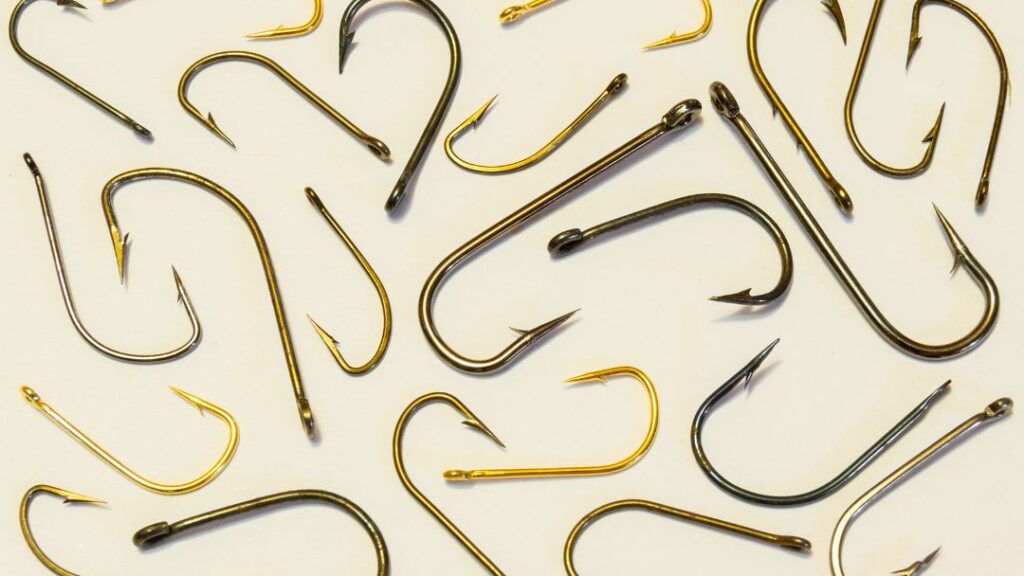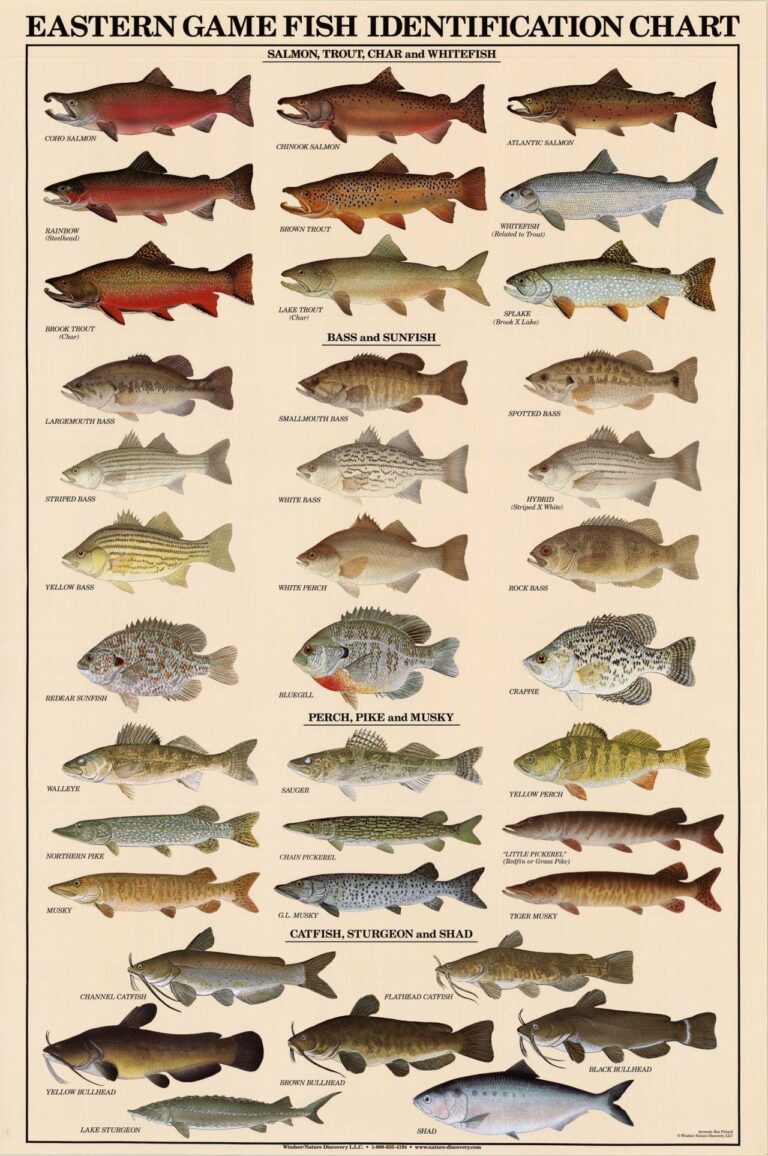Fishing Hook Sizes That Guarantee Success
Fishing hook sizes are important for finding the right one. The size of the fishing hook determines the target fish species and bait presentation, making it crucial to choose the appropriate size for successful fishing.
We will discuss the significance of fishing hook sizes and provide tips on finding the right one to enhance your fishing experience.
From understanding hook size terminology to considering factors like fish species, bait type, and fishing conditions, we will equip you with the knowledge to select the perfect hook size for your fishing needs.
So, let’s delve into the world of fishing hook sizes and discover how to choose the right one for your next fishing adventure.
Understanding Fishing Hook Sizes
When it comes to fishing hook sizes, it’s important to understand the differences and choose the right size for your fishing needs. Fishing hooks come in a range of sizes, denoted by numbers or letters, such as 1/0, 2/0, 3/0, or 1, 2, 3. But what do these numbers and letters mean? Let’s dive in to find out.
Fishing hook sizes are not standardized across all manufacturers, which can make it confusing when you’re trying to choose the right hook for a specific fishing situation. However, there is some general consensus on hook sizes based on their numbers or letters.
Generally, larger numbers or letters indicate larger hook sizes, while smaller numbers or letters indicate smaller hook sizes. For example, a size 1 or 1/0 hook is smaller than a size 2 or 2/0 hook. By understanding this basic concept, you can start identifying the right hook size for your fishing needs.

Importance Of The Right Hook Size For Success
Choosing the right hook size is crucial for a successful fishing experience. Using the wrong hook size can affect your ability to hook and land fish effectively. Here are a few reasons why the right hook size matters:
- Matching the bait: Using a hook that is too large or too small for your bait can result in missed strikes. Fish may not be able to properly swallow the bait or may sense something amiss, causing them to shy away.
- Targeting the right fish: Different fish species have different mouth sizes and feeding habits. Using the right hook size ensures that you are targeting the fish you want to catch, increasing your chances of success.
- Reducing harm to fish: Using a hook that is too large can cause unnecessary harm to fish, making it difficult to release them safely. On the other hand, using a hook that is too small may result in fish swallowing the hook, which can be detrimental to their survival when released.
By understanding the importance of the right hook size, you can make informed decisions when selecting your fishing gear and increase your chances of a successful fishing trip.
Factors Influencing Hook Size Selection
Choosing the right hook size is crucial for successful fishing. The size of your hook can greatly impact your catch rate, as it determines how effectively you can hook and land fish.
There are several factors that influence hook size selection, including the fish species and their mouth size, fishing techniques and bait types, as well as water conditions and clarity.
Fish Species And Their Mouth Size
When it comes to hook size selection, understanding the mouth size of the fish species you are targeting is essential. Different fish have different mouth structures, and using a hook that is too large or too small can result in missed hooksets or lost fish.
For example, larger predatory fish such as bass or pike may require larger hooks to ensure a solid hookset, while smaller fish like crappie or trout may call for smaller hooks to avoid overpowering their delicate mouths.
Fishing Techniques And Bait Types
Your fishing technique and the type of bait you use also play a significant role in determining the appropriate hook size. If you are using live bait, such as worms or minnows, you’ll want to match the hook size to the bait size.
This ensures that the bait looks natural and enticing to the fish. On the other hand, if you’re using artificial lures, such as soft plastic baits or crankbaits, the hook size should be chosen based on the target species and the size of the lure.
Water Conditions And Clarity
The water conditions and clarity can have an impact on hook size selection. In heavily stained or murky waters, using a larger hook with a wider gap can help improve hooking efficiency, as it provides a larger target for the fish to latch onto.
In clear water, however, a smaller hook may be necessary to ensure a stealthy presentation and avoid spooking fish.
Additionally, the depth at which you’re fishing can also influence hook size, with deeper waters often requiring larger hooks to effectively penetrate the fish’s mouth.
Determining The Ideal Hook Size For Different Fish
When it comes to fishing, using the right hook size can make a significant difference in your success. A hook that is too large may scare away the fish, while a hook that is too small may not be able to effectively catch your target species.
So, how do you determine the ideal hook size for different fish? In this section, we will explore some general hook size recommendations for popular fish types. Let’s dive in!
Matching the hook size to the target species is crucial for maximizing your chances of a successful catch. Fish vary in size and structure, meaning they require different hook sizes to effectively secure a bite. Here are some guidelines to help you choose the right hook size for specific fish:
Trout
Trout are known for their finicky nature, so it’s important to use the right size hook for these elusive fish. For smaller trout, such as brook trout or rainbow trout, a size 8 to 12 hook is generally recommended.
Medium-sized trout, such as brown trout, may require a hook size ranging from 4 to 8. For larger species like lake trout, you may need a hook size between 1/0 and 4/0.
Bass
Bass are strong and aggressive fighters, so you’ll need a hook that can withstand their powerful strikes. When targeting largemouth or smallmouth bass, a hook size between 1/0 and 5/0 is typically suitable. If you’re fishing for striped bass, a larger hook size ranging from 4/0 to 9/0 may be necessary.
Panfish
Panfish, including bluegill, crappie, and perch, are smaller species that require smaller hooks. For these fish, a hook size between 6 and 10 is often recommended. Keep in mind that panfish have small mouths, so using a smaller hook will increase your chances of hooking them effectively.
Salmon
Salmon are prized game fish that can grow quite large. When targeting different species of salmon, such as Chinook or Coho, a hook size between 1/0 and 3/0 is generally appropriate. However, if you’re pursuing larger species like King Salmon, you may need a hook size ranging from 4/0 to 8/0.
While the above guidelines provide a starting point for selecting the right hook size, here are some general recommendations for popular fish types:
| Fish Type | Ideal Hook Size |
|---|---|
| Trout | Size 8-12 for smaller trout, 4-8 for medium-sized trout, 1/0-4/0 for larger trout |
| Bass | 1/0-5/0 for largemouth or smallmouth bass, 4/0-9/0 for striped bass |
| Panfish | Size 6-10 |
| Salmon | 1/0-3/0 for most salmon species, 4/0-8/0 for larger salmon species |
Remember, these recommendations are not set in stone, and experimentation might be required to find the perfect hook size for a specific fishing situation or location. Additionally, consider factors such as water conditions, bait used, and personal fishing techniques when determining the ideal hook size. Happy fishing!
Benefits Of Using Proper Hook Sizes
Using the right hook size can significantly enhance your fishing experience. Not only does it increase your hook-up rates, but it also minimizes harm to the fish and improves their chances of survival. Let’s delve into these benefits in detail:
Increased Hook-up Rates
Bigger isn’t always better when it comes to fishing hooks. Using a hook that’s too large for the fish you’re targeting can lead to missed opportunities. On the other hand, using a hook that’s too small might not provide enough gripping power to secure the catch. By selecting the appropriate hook size, you can ensure a higher hook-up rate.
When choosing a hook, consider the size of the fish species you intend to catch. For larger fish, you may need a larger hook, while smaller fish require smaller hooks. This strategic selection will improve your chances of successfully hooking the fish, helping you reel in more catches during each fishing trip.
Minimal Harm To Fish And Higher Chances Of Survival
Using the proper hook size benefits not only the angler but also the fish. When a fish takes the bait, the hook is designed to penetrate the mouth or lip area, providing a secure hold. However, if you use a hook that is too large, it can cause unnecessary damage to the fish, potentially injuring vital organs or tearing through sensitive tissues.
By using the right hook size, you minimize harm to the fish, increasing their chances of survival after being released. A properly sized hook ensures that the fish can be easily and safely unhooked without inflicting major injuries or causing excessive stress. This responsible angling practice supports sustainable fishing, allowing fish populations to thrive for generations to come.
Overall, using proper hook sizes is crucial for both successful fishing experiences and conservation efforts. So, before your next fishing adventure, take the time to select the appropriate hook size for your target species. By doing so, you’ll enhance your hook-up rates, minimize harm to fish, and contribute to the long-term preservation of our precious aquatic ecosystems.
Tips For Choosing The Right Hook Size
Choosing the right hook size is pivotal in the world of fishing. Every angler knows that using the proper hook size can make all the difference between landing a big catch and going home empty-handed.
Considering The Type Of Fishing Equipment
One crucial factor to keep in mind when selecting a hook size is the type of fishing equipment you are using. Different rods and reels are designed for specific types of fishing, and each requires a different hook size to optimize performance.
For instance, if you are using a lightweight spinning reel for trout fishing, smaller hook sizes like 10 or 12 would be more suitable. On the other hand, if you are planning to catch larger species such as bass or pike, using larger hook sizes like 1 or 2/0 may be necessary.
Experimenting With Different Hook Sizes
Sometimes, determining the right hook size can be a matter of trial and error. Every fishing situation is unique, and what works for one angler may not work for another. It is beneficial to experiment with different hook sizes to see which one yields the best results. Start with a size that you think might work well based on the fish species and conditions you are targeting.
If you are not getting bites, try adjusting the hook size—going slightly smaller or larger—and observe the response. Keep notes about your experiments to help you remember what worked and what didn’t in specific situations.
Seeking Advice From Experienced Anglers
One of the best ways to determine the appropriate hook size is by seeking advice from experienced anglers. These individuals have spent countless hours on the water and have acquired valuable knowledge about what works best in different fishing scenarios.
Strike up a conversation with seasoned anglers at your local fishing tackle shop or join online fishing communities where you can ask for recommendations. Their insights and experiences can provide valuable guidance in choosing the right hook size for your specific fishing needs.
To summarize, choosing the right hook size involves considering the type of fishing equipment you are using, experimenting with different sizes, and seeking advice from experienced anglers. By applying these tips, you can increase your chances of hooking the perfect catch. Happy fishing!
Conclusion
Fishing hook sizes play a crucial role in determining your success in the waters. By understanding the importance of selecting the right size, you can enhance your chances of catching your desired fish.
Whether you’re a beginner or an experienced angler, finding the right hook size ensures efficient bait presentation and reduces the risk of fish escaping.
So, next time you head out for a fishing adventure, remember to consider the hook size as a vital element in your tackle box. Happy fishing!





